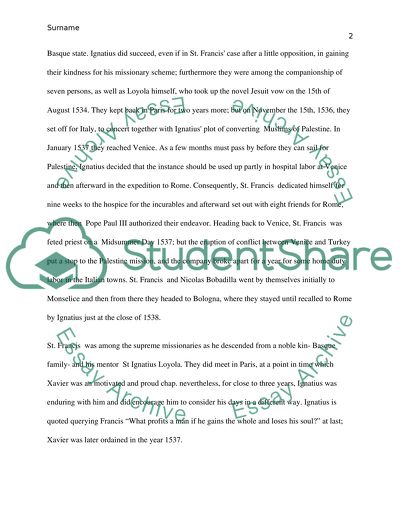Cite this document
(“Bio of the Jesuit saint Francis Xavier and book report/review on”, n.d.)
Retrieved from https://studentshare.org/religion-and-theology/1473246-bio-of-the-jesuit-saint-francis-xavier-and-book
Retrieved from https://studentshare.org/religion-and-theology/1473246-bio-of-the-jesuit-saint-francis-xavier-and-book
(Bio of the Jesuit Saint Francis Xavier and Book report/Review on)
https://studentshare.org/religion-and-theology/1473246-bio-of-the-jesuit-saint-francis-xavier-and-book.
https://studentshare.org/religion-and-theology/1473246-bio-of-the-jesuit-saint-francis-xavier-and-book.
“Bio of the Jesuit Saint Francis Xavier and Book report/Review on”, n.d. https://studentshare.org/religion-and-theology/1473246-bio-of-the-jesuit-saint-francis-xavier-and-book.


